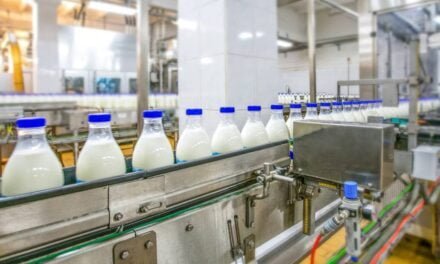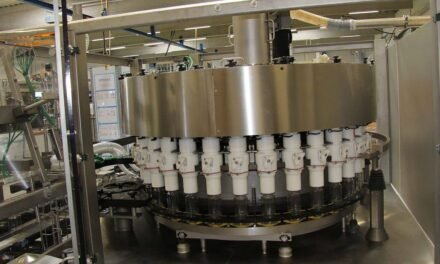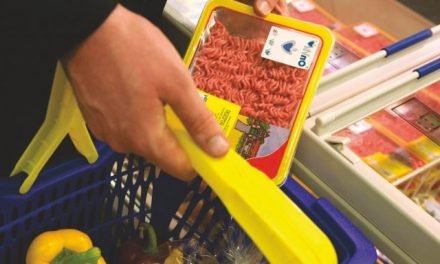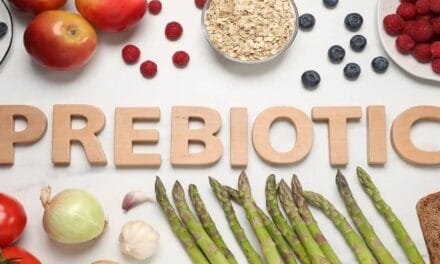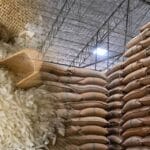Explore top 10 technologies like high pressure processing, microwave pasteurisation, Ultrasonic Food Cutting and more that are transforming the food processing industry.
The food industry is constantly evolving, driven by consumer demand for healthier, more convenient, and sustainable food options. In recent years, the food processing industry has seen a remarkable transformation, driven by cutting-edge technologies that revolutionise how we produce, preserve, and package our food. These emerging food processing technologies play a crucial role in meeting these demands while enhancing food production’s safety, quality, and efficiency.
These advancements not only enhance food safety and quality but also address environmental concerns and consumer demands for healthier and more convenient options. This article will explore the top 10 technologies transforming food processing industry.
Top 10 Technologies transforming food processing
1. High Pressure Processing (HPP)
High Pressure Processing (HPP) is transforming the food preservation process by using extreme pressure to eliminate harmful pathogens and extend shelf life, all without heat or chemical preservatives. By maintaining the original taste, texture, and nutritional value, HPP in food processing is a popular choice for fresh products such as guacamole, juices, and deli meats.
This technology provides a fresh-tasting experience while ensuring food safety, making it highly attractive for health-conscious consumers and producers alike.

2. Microwave Pasteurisation
Microwave pasteurisation offers a fast, efficient way to heat and preserve liquid foods, such as milk and soups. This technology rapidly kills pathogens while maintaining the product’s freshness and flavour.
Compared to traditional pasteurisation methods, microwave technology reduces processing times and energy consumption, making it a highly efficient solution for modern food manufacturers.

3. Ultrasonic Food Cutting
Ultrasonic food cutting utilises high-frequency sound waves to slice and portion food products precisely, with minimal deformation. It is particularly beneficial in the bakery and confectionery sectors, where delicate items like cakes and chocolates require precise, clean cuts.
By improving precision and reducing waste, ultrasonic cutting enhances both the quality and aesthetics of food products, contributing to more efficient production lines.

4. Pulsed Electric Field Processing (PEF)
Pulsed Electric Field (PEF) processing uses short bursts of electricity to break down cell membranes, enhancing the extraction of valuable compounds and reducing microbial load. It is widely used in fruit and vegetable processing.
This non-thermal technology improves nutrient retention and boosts processing efficiency, helping manufacturers produce healthier, longer-lasting juices and vegetable products.
5. Cold Plasma Technology
Cold plasma technology employs ionised gases to disinfect food and extend shelf life. It offers an eco-friendly alternative to chemical disinfectants, reducing the environmental impact of food processing.
With the potential to replace traditional chemical preservatives, cold plasma is emerging as a game-changing innovation in food safety and sustainability.

6. 3D Printing in Food
3D printing in food manufacturing allows for the creation of intricate and customised designs. From personalised chocolates to complex pastries, this technology combines artistry with functionality.
Beyond aesthetics, 3D printing enables the production of tailored meals, offering consumers personalised nutrition options and expanding the creative possibilities for chefs and manufacturers.

| Also Read: 3-D Food Printing Could Change How We Eat
7. Blockchain for Food Traceability
Blockchain technology is revolutionising the food supply chain by providing complete transparency and traceability. Consumers can now trace the journey of their food from farm to table, ensuring safety, quality, and ethical sourcing.
Blockchain is helping brands build trust with consumers by offering proof of origin, ethical sourcing practices, and enhanced food safety measures.
| Also Read: Blockchain technology in food supply chain

8. Nanotechnology in Food Packaging
Nanotechnology is enhancing food packaging materials by increasing their barrier properties, thereby extending shelf life and reducing waste. Intelligent packaging, which changes colour in response to spoilage or temperature variations, is another exciting application of nanotechnology.
By improving food preservation and safety, nanotechnology is contributing to reducing food waste and extending product shelf life.
| Also Read: Nanotechnology for Safe Meat Packaging
9. AI and Machine Learning in Quality Control
Artificial intelligence (AI) and machine learning are improving quality control by rapidly identifying defects, optimising sorting, and refining production processes. These technologies help ensure product consistency and reduce operational costs.
By automating quality checks, AI reduces human error, increases efficiency, and ensures that consumers receive high-quality products every time.
| Also Read: AI Applications in Food Industry
| Also Read: Demystifying Industry Jargon: AI and Beyond
10. Insect-Based Protein Production
With the rising demand for sustainable food sources, insect-based protein production is gaining momentum. Insects are highly efficient protein sources, requiring fewer resources than traditional livestock. They are increasingly being used in protein bars, snacks, and other food products.
Insect-based proteins offer a sustainable solution for addressing global food security concerns, appealing to eco-conscious consumers seeking alternative protein sources.
| Also Read: Insect producer Divaks chooses Bühler for industrial-scale yellow mealworm plant
| Also Read: Arla Foods and ENORM team up to harness upcycling power of insects
Conclusion
The integration of these innovative technologies is transforming the food processing industry, making it more efficient, sustainable, and consumer-focused. As the world’s population grows and consumers demand more transparency, safety, and convenience, these advancements will continue to shape the future of food production. By adopting these technologies, food manufacturers can stay competitive, meet evolving consumer needs, and contribute to a more sustainable and secure global food system.
FAQs on Emerging Food Processing Technologies
What is High Pressure Processing (HPP), and why is it important in food processing?
High Pressure Processing (HPP) is a non-thermal method that uses extreme pressure to kill harmful bacteria and extend the shelf life of food without affecting its taste, texture, or nutritional value. It is important because it allows food manufacturers to offer fresher, preservative-free products that are safe to consume.
How does microwave pasteurisation differ from traditional pasteurisation?
Microwave pasteurisation heats food products more quickly and uniformly compared to traditional methods. It is especially useful for liquid foods, reducing the overall processing time while maintaining the product’s freshness and nutritional quality.
What are the benefits of ultrasonic food cutting in the bakery and confectionery industry?
A3: Ultrasonic food cutting offers precise and clean slicing of delicate items like cakes and chocolates without causing damage or deformation. This technology improves production efficiency, reduces waste, and enhances the visual appeal of food products.
What are the applications of Pulsed Electric Field (PEF) technology in the food industry?
PEF technology is widely used in the fruit and vegetable industry to enhance nutrient extraction, improve processing efficiency, and reduce microbial load. It is a non-thermal technique that helps retain the natural qualities of food products while extending their shelf life.
How does cold plasma technology contribute to sustainability in food processing?
Cold plasma technology uses ionised gases to disinfect food, offering an eco-friendly alternative to chemical preservatives. It reduces the environmental impact of food processing and helps ensure food safety without the need for harmful chemicals.
What role does 3D printing play in food processing?
3D printing allows for the creation of intricate and personalised food designs, offering both aesthetic and functional benefits. It is used to produce custom food products such as personalised chocolates or tailored meals for specific dietary requirements.
How is blockchain technology used for food traceability?
Blockchain technology provides transparency and traceability across the food supply chain, enabling consumers to track the journey of food products from farm to table. It ensures food safety, ethical sourcing, and greater trust between consumers and brands.
What are the advantages of using nanotechnology in food packaging?
Nanotechnology enhances the barrier properties of packaging, helping to extend the shelf life of food and reduce waste. Additionally, intelligent packaging, which changes colour in response to spoilage or temperature changes, further ensures food safety.
How does AI and machine learning improve quality control in food processing?
AI and machine learning technologies improve quality control by automating the detection of defects, optimising product sorting, and streamlining production processes. It ensures product consistency, reduces human error, and increases operational efficiency.
Why is insect-based protein considered a sustainable alternative to traditional protein sources?
Insect-based protein production is considered more sustainable because it requires significantly fewer resources—such as land, water, and feed—compared to traditional livestock farming. Insects are rich in protein and are increasingly being used in various food products like snacks and protein bars.
‘Processed Food Industry’: The Voice of Food Processing Industry
Processed Food Industry (PFI) is a premier English-language monthly B2B publication (ISSN 09721649) headquartered in New Delhi, catering to the vibrant and ever-evolving food processing industry. While we don’t claim to be the largest or most widely read, our proud legacy of over 27 years—publishing continuously since 1997—has earned us the trust of industry professionals as a reliable source of insights and information.
If your goal is to tap into the booming Indian and South Asian markets to promote your equipment, technology, software, or consumables, PFI is your strategic partner. With our hybrid approach across print, web, and social media, we help you establish strong brand recognition rooted in market relevance. Backed by a team of top-tier technical writers, we’re ready to work closely with you and your customers to craft compelling content that drives results.
India and South Asia’s food industry is expanding rapidly, driven by efficiency and cutting-edge innovations. Don’t miss the opportunity to elevate your brand and engage with this dynamic market. Get our 2025 media kit to fine-tune your marketing strategy, increase your visibility, and convert potential customers into valuable conversations. Additionally, ask for a sample copy of our monthly magazine and experience the quality and relevance we deliver.
Let us help you define your role in the future of the food processing industry.
Have a news or topic to share with industry? Write to us editorial@pfionline.com



